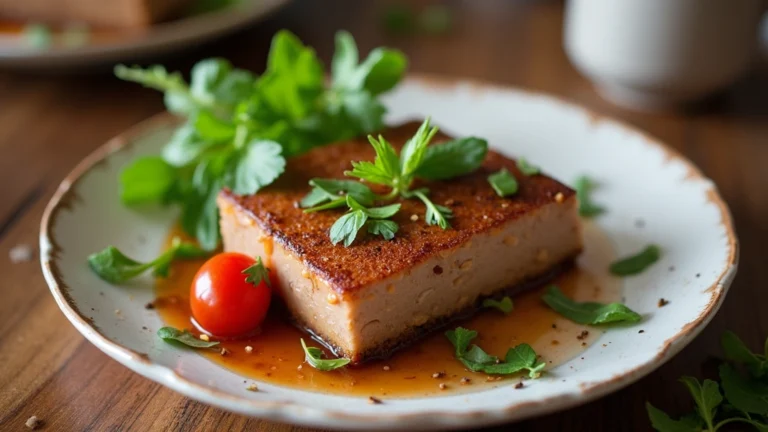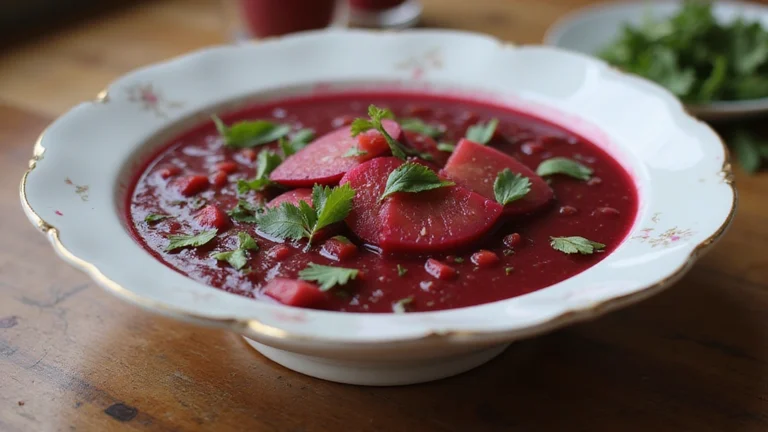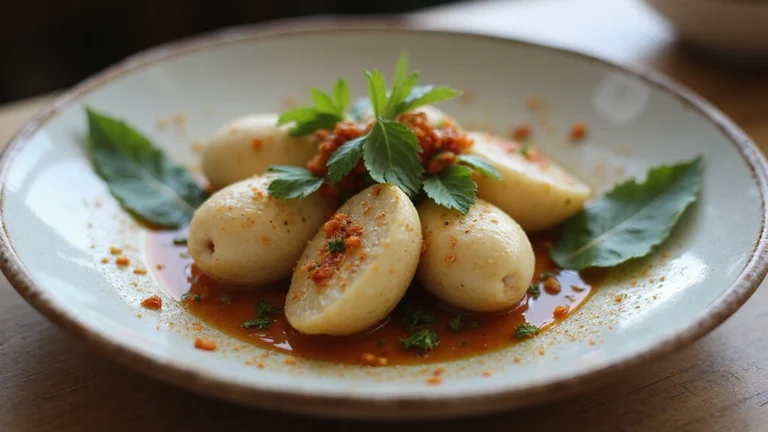
When it comes to comfort food, sup nui, or Vietnamese macaroni soup, holds a special place in our hearts. This humble yet hearty dish combines tender pasta, flavorful broth, and a medley of proteins and vegetables to create a bowl of pure warmth. It’s the kind of meal that reminds us of home, where simple ingredients come together to create something truly satisfying.
What makes sup nui so special is its versatility. We can customize it with chicken, pork, or even seafood, depending on what we have on hand. It’s a popular breakfast or light meal in Vietnam, but honestly, we think it’s perfect any time of the day. Whether we’re craving something soothing or looking for a quick and easy dish, sup nui never disappoints.
What Is Sup Nui?
Sup nui is a delightful Vietnamese macaroni soup that blends simplicity with rich, comforting flavors. At its heart, this dish features tender macaroni immersed in a light yet flavorful broth, accompanied by an assortment of protein options and fresh vegetables. It’s a dish many of us associate with warmth and nostalgia, often served as a go-to comfort food in Vietnamese households.
The broth forms the soul of sup nui, traditionally made by simmering pork bones or chicken with aromatic spices to create a delicate yet savory base. Then comes the macaroni, cooked until perfectly al dente to soak up the broth’s rich flavor. For proteins, we can add slices of tender pork, shredded chicken, or even shrimp for a seafood twist. Fresh veggies like carrots, sweet corn, and peas complete the dish, adding color, texture, and a touch of natural sweetness.
What makes sup nui truly special is its versatility. It can adapt to almost any preference or dietary need. Whether we start the day with a hearty bowl for breakfast or enjoy it as a light dinner, sup nui always satisfies with its comforting essence and homemade feel.
Ingredients

Here’s everything we need to create a warm and hearty bowl of sup nui. Each ingredient plays a role in building the dish’s comforting flavors and textures:
For the Broth:
- 1 pound pork spare riblets or meaty pork bones, cut into small pieces
- 10 cups water
- 1 onion, peeled and halved
- 1 piece of ginger (about 2 inches), lightly smashed
- 1 daikon radish, peeled and cut into large chunks
- 2 carrots, peeled and sliced into thick rounds
- 2 celery stalks, roughly chopped
- Optional: 1 apple, quartered (for added natural sweetness)
For the Soup:
- 2 cups macaroni or your choice of small pasta shapes (“nui”)
- For a bouncier texture, use yellow-style nui made from wheat flour and eggs.
- For a gluten-free option, opt for white rice flour-based “nui gạo.”
Seasonings:
- 2 teaspoons salt (adjust to taste)
- 1 teaspoon sugar
- 1 teaspoon fish sauce (optional, for umami)
- Freshly ground black pepper, to taste
Optional Add-Ons:
- 1 cup sweet corn or frozen peas
- Fresh herbs like chopped cilantro or scallions for garnish
- Crispy fried shallots for added crunch
With these ingredients, we’re ready to start crafting a bowl of sup nui that’s packed with flavor and comfort.
Tools You’ll Need

To prepare a comforting bowl of sup nui, having the right tools on hand ensures a smoother cooking process. Here’s a list of essentials you’ll want to gather before starting:
- Large stockpot: We need this to simmer the pork bones and create a clear, flavorful broth. A 6-quart stockpot works well for home cooking.
- Strainer or mesh skimmer: This is crucial for removing impurities and foam that rise to the surface while simmering the broth, keeping it crystal clear.
- Cutting board and sharp knife: Use these for neatly chopping carrots, celery, daikon radish, and any optional vegetables.
- Mixing bowl: Perfect for soaking the pork bones before boiling to remove residue.
- Ladle: For skimming the broth and serving your finished soup.
- Small pan: If garnishing your soup with crispy fried shallots, you’ll need a pan to fry them to golden perfection.
- Colander: This will help drain the macaroni or pasta after boiling.
- Measuring spoons and cups: Precise measurements of seasoning ingredients like salt, sugar, and fish sauce ensure a balanced flavor.
With these tools ready, you’ll breeze through each step of preparing sup nui without a hitch.
Directions

Follow these steps to prepare a delicious and comforting bowl of sup nui. With a bit of patience and care, you’ll create a beautifully flavorful soup perfect for any time of day.
Step 1: Parboil the Ribs
- Begin by separating the pork ribs into individual pieces by cutting between the bones.
- Place the ribs in a large pot and cover them with plenty of cold water.
- Bring the water to a boil over medium heat. Let the ribs parboil for 2-3 minutes until impurities and foam rise to the surface.
- Drain the pot into a colander, discarding the water, and rinse the ribs thoroughly under cold running water.
- Set the cleaned ribs aside. This step ensures a clear and clean broth free of any scum.
Step 2: Prepare the Broth
- In a clean large stockpot, combine the parboiled ribs with 6 cups of fresh water.
- Add aromatics like one peeled onion (halved), a knob of ginger (smashed), and optional ingredients such as celery or carrots for extra flavor.
- Bring the pot to a boil over medium heat, then reduce to a gentle simmer. Skim off any foam or impurities that float to the surface.
- Cover the pot with the lid slightly ajar and let it simmer for 45-60 minutes, or until the ribs are tender and the broth is clear and flavorful.
- For an added touch of sweetness, you can include a peeled and halved apple during the simmering process.
Step 3: Cook the Macaroni
- While the broth is simmering, cook the macaroni or pasta of your choice in a separate pot with salted boiling water. Follow the package instructions for al dente doneness, usually 8-10 minutes.
- Once cooked, drain the macaroni in a colander and rinse it under cold water to stop the cooking process and prevent sticking.
- Set the pasta aside until ready to assemble the soup.
Step 4: Add Vegetables and Season the Soup
- Peel and cut the carrots and daikon radish into small, uniform chunks. For even cooking, cut the carrots slightly smaller than the radish pieces.
- Add half of the carrots and daikon radish chunks to the simmering broth once the ribs are almost tender (after about 45 minutes).
- Let the vegetables cook until tender, about 10-15 minutes. Add the remaining vegetables in the final stage to prevent overcooking and to retain a variety of textures.
- Season the soup gradually with 1½ teaspoons of salt, ¼ cup fish sauce, and 1 tablespoon of sugar. Taste the broth and adjust seasoning as needed, ensuring a balanced yet savory flavor profile.
Step 5: Assemble and Serve
- To serve, place a generous portion of cooked macaroni into each bowl.
- Ladle the warm broth, along with the tender pork ribs and cooked vegetables, over the pasta.
- Garnish with freshly chopped herbs like cilantro or green onions for a burst of freshness. Add crispy fried shallots for added texture, if desired.
- Enjoy your hearty bowl of sup nui while it’s hot!
Tips For Perfect Sup Nui

1. Choose High-Quality Ingredients
Using fresh, high-quality ingredients is key to making an exceptional bowl of sup nui. For the broth, pork spare riblets or meaty pork bones work best since they deliver a rich and flavorful base. Opt for small pasta shapes like macaroni or pastina—Vietnamese brands such as Safoco are ideal as they hold their texture well in soup. Additionally, fresh vegetables like carrots and celery not only add sweetness but also enhance the soup’s color and nutritional value.
2. Parboil the Pork Bones
To achieve a clear and clean-tasting broth, always parboil the pork ribs or bones first. Bring a large pot of water to a boil, add the ribs, and let them simmer for about 5–7 minutes. During this process, impurities will rise to the surface—these can be skimmed off easily. Once done, rinse the ribs under running water to remove any remaining residue before transferring them to your soup pot.
3. Simmer the Broth Slowly
A well-simmered broth is the heart of perfect sup nui. Combine the parboiled ribs with aromatics like onion, ginger, and daikon radish in a large stockpot filled with fresh water. Let this mixture simmer on low heat for at least 1.5–2 hours. The slow cooking extracts deep flavors while maintaining clarity. For extra depth, you can add a quartered apple to the broth for natural sweetness.
4. Cook Pasta Separately
To avoid overly soft pasta that can cloud the broth, always cook the macaroni separately according to the package instructions. Drain and rinse it under cool water to stop the cooking process. This step ensures the pasta retains its texture when added to the soup later.
5. Cut Vegetables Uniformly
When preparing vegetables like carrots or celery, cut them into uniform pieces. This helps them cook evenly and enhances the presentation of the dish. For a decorative touch, cut the carrots into flower shapes using a small paring knife or a vegetable cutter.
6. Season Gradually and Adjust
Taste-testing is crucial during the cooking process. Start seasoning the broth lightly with salt, sugar, and fish sauce, then adjust gradually to achieve a balanced flavor. Remember, the broth should be slightly over-seasoned to account for the mild macaroni that will absorb the seasoning.
7. Garnish for Added Flavor and Texture
Adding fresh garnishes elevates the final dish. Sprinkle crispy fried shallots, freshly chopped cilantro, and thinly sliced green onions on top of the soup just before serving. For extra texture, consider adding kernels of sweet corn or a handful of blanched peas.
8. Serve Hot and Fresh
Sup nui is best enjoyed piping hot to appreciate its comforting aroma and rich flavors. Serve it immediately after assembling to ensure the pasta doesn’t become too soft. Keep extra broth on hand if serving later, to reheat and refresh the soup.
Storage And Reheating

Proper storage and reheating of Súp Nui help us enjoy its comforting flavors even days after preparation. Let’s explore the best ways to keep this delightful dish fresh and delicious.
Storage
- Refrigeration: To store Súp Nui in the fridge, we recommend separating the macaroni from the broth. This step prevents the pasta from soaking up too much liquid and turning mushy. Place the macaroni in one sealed container and the broth in another. When stored this way, Súp Nui stays fresh for up to 4 days.
- Freezing: While we have no specific guidance for freezing Súp Nui, general soup storage best practices suggest freezing the broth for up to three months. For convenience, portion out the soup into individual servings before freezing. This way, reheating is quicker and easier whenever we crave a warm bowl.
Reheating
- Stovetop Method: For the best results, reheat Súp Nui using the stovetop method. Combine the desired portions of macaroni and broth in a small pot. Heat the soup over low to medium heat, stirring occasionally, until it reaches the desired temperature. Be careful not to overcook the pasta while reheating, as it can quickly become mushy. Taking our time with this step ensures a fresh and delicious result.
Following these storage and reheating methods keeps Súp Nui just as delightful as when it was first served, allowing us to savor the flavors of this comforting Vietnamese soup at any time.
Substitutions And Variations
When it comes to sup nui, there’s plenty of room for creativity and flexibility to suit your palate or availability of ingredients. Here are some of our favorite substitutions and variations to make this comforting dish uniquely yours:
Ingredient Substitutions
- Pork Bones and Ground Pork: If you’d like to simplify the recipe or enhance the broth’s richness, you can swap out both the pork bones and ground pork for meaty pork spare ribs. This substitution ensures a flavorful yet straightforward take on the recipe.
- Sugar: Yellow rock sugar adds a subtle sweetness to the broth. If you don’t have it on hand, replace it with ½ tablespoon of white granulated sugar for a similar result.
- Pasta: While traditional Vietnamese macaroni (nui) made from rice flour provides authenticity, feel free to substitute with other short pasta shapes. Fusilli, shells, rotini, or classic elbow macaroni all work beautifully and absorb the broth’s essence just as well.
Broth Enhancements
- Charring Vegetables: For a deeper and more complex broth, we recommend charring your aromatics—onion, shallot, and ginger—over an open flame before adding them to the soup pot. This optional step adds a smoky, rich undertone to the broth’s flavor profile.
- Natural Sweetness: Consider adding a peeled and cored apple to the broth for a touch of natural sweetness. It complements the savory elements while offering balance to the soup.
Texture and Flavor Variations
- Protein Options: Beyond pork, you can experiment with shredded chicken, shrimp, or tofu as protein substitutes. These alternatives open up possibilities for those with dietary restrictions or preferences.
- Vegetable Add-ins: Get creative with your veggies. Along with carrots and sweet corn, try adding baby bok choy, peas, or mushrooms for extra variety and nutrition. Each addition enhances the texture while contributing vibrant colors to the final dish.
These ideas make sup nui a versatile foundation, letting you tailor it to preferences, availability of ingredients, or even a touch of culinary experimentation.
Conclusion
Sup nui holds a special place in our hearts as more than just a meal—it’s a warm embrace in a bowl. Its versatility invites us to get creative while its comforting flavors remind us of home. Whether we’re savoring it fresh or reheating leftovers, sup nui never fails to bring joy to our table. Let’s keep this cherished dish alive by making it our own and sharing it with those we love.
Frequently Asked Questions
What is Sup Nui?
Sup Nui is a comforting Vietnamese macaroni soup made with tender pasta, flavorful broth, proteins like pork, chicken, or shrimp, and fresh vegetables. It’s a versatile dish enjoyed any time of the day.
What Makes the Broth Special?
The broth is made by simmering pork bones or chicken with aromatics like onion, ginger, and daikon radish. This process creates a rich, flavorful base that defines sup nui.
Can I Customize Sup Nui?
Yes! You can personalize it with different proteins (such as shrimp, tofu, or chicken) and vegetables like peas, sweet corn, or carrots to suit your taste.
How Do You Reheat Sup Nui?
For the stovetop method, combine the broth and macaroni in a pot and heat on low to medium until warm. Avoid overcooking the pasta to retain its texture.
How Should Sup Nui Be Stored?
Store the broth and macaroni separately in the refrigerator for up to four days. You can also freeze the broth for up to three months for longer storage.
What Pasta Works Best for Sup Nui?
Elbow macaroni is the most popular choice, but you can use other small pasta shapes like shells or penne to suit your preference.
Can I Make Sup Nui Vegetarian?
Absolutely! Replace the meat-based broth with a vegetable stock and use tofu or plant-based proteins along with fresh veggies.
How Long Does It Take to Make Sup Nui?
With proper preparation, sup nui takes about an hour to simmer the broth and assemble all the ingredients, making it a quick and hearty meal option.
What Are Some Broth Enhancements?
You can char vegetables for a smoky flavor or add an apple to the broth for natural sweetness, creating a unique flavor profile.
Why Is Sup Nui Popular?
Its heartwarming flavors, easy preparation, and adaptability to different tastes make sup nui a beloved comfort food for families worldwide.



